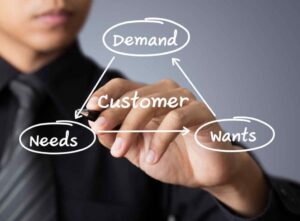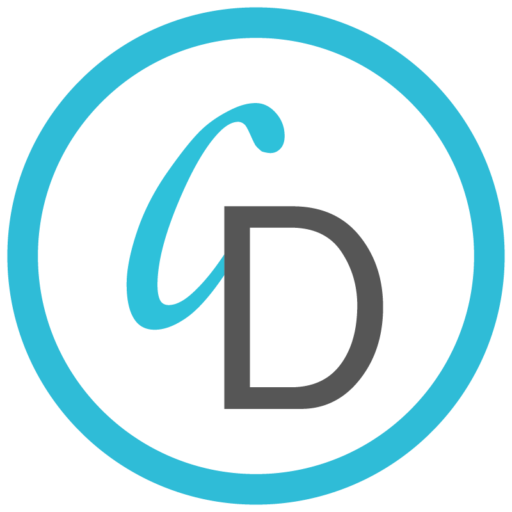our blog
How to Use Your CRM to Improve Your Nonprofit’s Marketing
Your nonprofit’s CRM, or constituent relationship management system, is one of the most valuable tools in your technological toolbox. Not only does your CRM house all of your donor data, from contact details and preferences to donation histories, but the information within your database informs all of your organization’s interactions and strategies. Your CRM can help you save time and resources while also improving your donor relationships.
When you use your CRM intentionally, it can also be a powerful tool for nonprofit marketing. We’ll discuss four steps you can take to leverage your CRM to improve marketing success:
- Keep your data clean and up-to-date
- Create a variety of donor segments
- Leverage marketing automation
- Tailor your CRM to your marketing needs
Whether you’ve just implemented a new CRM for your nonprofit or you’re looking for ways to use your existing system more effectively, taking these steps can make a difference. Let’s dive in to learn how you can use this impactful tool to generate more support for your nonprofit.

The first step to improving your marketing strategy with the help of your CRM is to verify your data’s integrity. The quality of your donor data can make a major difference in the success of your marketing campaigns. After all, even the best campaigns can fall flat if they don’t reach the right audience.
To clean up the data in your CRM, NPOInfo’s data hygiene guide suggests conducting an audit of your database and then creating a standardized process for ongoing maintenance. Some nonprofits choose to automate this process by using data hygiene integrations, while others use professional data append services.
However you decide to clean the data in your CRM, doing so should be a priority. Keeping accurate, up-to-date information is key for:
- Reaching your audience: Your marketing efforts will only make a difference if you send messages to the right people. Ensure that all of the supporter email addresses, mailing addresses, and phone numbers in your CRM are updated and accurate.
- Personalizing communications: Keeping inaccurate information in your database can hinder your personalization efforts. For example, if a donor changes their name and you address them by their old name in promotional emails, you could lose their support.
- Saving your team time: Hygienic data will ensure that your marketing team doesn’t waste time crafting personalized messages that end up in the wrong inboxes. The time you spend cleaning your data will save your staff much more time in the long run.

Once you’ve taken steps to ensure the data in your CRM is clean and useful, use your software to create segments within your support base. Personalizing donor communications is a crucial part of building relationships with your supporters because it shows that you value them as unique individuals and care about their personal support.
Within your CRM, consider grouping donors by:
- Giving Level: Major, mid-level, and minor donors all warrant different types of marketing strategies. You might highlight a long-time mid-level donor in your monthly newsletter, for example, while you send your group of first-time minor donors an email series with more information about your nonprofit.
- Engagement History: Information on supporter involvement activities and data showing how they typically respond to your messaging are both valuable. If you notice that one donor has never volunteered but filled out a survey expressing interest in volunteering, add them to a segment of potential volunteers and start marketing opportunities to them.
- Personal or Charitable Interests: Tailoring communications by the type of campaigns supporters donate to and the issues they respond to most will help you garner support for specific campaigns. If you launch a cause marketing campaign about overfishing, you can focus your initial outreach on a segment of those who have already donated to animal rights campaigns.
- Demographics: Age, location, gender, and career type can all inform your marketing decisions. A segment of young women from Gen Z is more likely to be active on social media than a group of donors from the Baby Boomer generation, for instance.
Overall, these segments will help you send messages that donors are more likely to engage with. Just be sure to revisit your segments from time to time to ensure they’re still relevant and effective.

Beyond segmentation, you can increase your success with personalization and save valuable team time by leveraging automation within your CRM. Automation can range from triggering simple donation acknowledgment emails to creating complex automated journeys that span weeks and account for different actions supporters might take.
If your CRM doesn’t come with out-of-the-box automation features, consider expanding your toolbox with add-ons or integrations that grant you access to these features. For example, if you use Salesforce as your CRM, you could invest in Salesforce Marketing Cloud to access more automation and data extension features to improve your marketing.
Once you have access to marketing automation tools, use them to set up automations that tailor marketing content based on donors’ needs. According to Redpath’s Marketing Cloud for Nonprofits guide, you can use your CRM’s automation tools to:
- Welcome new donors into your organization’s community.
- Follow up with attendees after fundraising events.
- Send birthday and donor anniversary emails.
- Re-engage lapsed donors with tailored email series.

Just like you can integrate a marketing automation tool with your CRM, there are plenty of other ways your organization can tailor your CRM to meet your unique needs. Want more ways to interact with supporters on social media or via text message? Your CRM can help.
Whether or not you have experienced developers on your team, technology consultants will be your greatest resource here. When you partner with experts who understand both your CRM and your nonprofit’s needs, they’ll be able to determine the best ways to implement, configure, and customize your CRM solution to support your goals.
For example, a nonprofit Salesforce consultant might help you find and implement the best SMS marketing app on the Salesforce AppExchange, or they might show you how to leverage your CRM’s existing features to improve your marketing results across the channels your donors care about most.
When you use your CRM effectively, you’ll build a solid foundation that allows you to connect with donors, take work off your team’s plate, and keep up with the latest nonprofit marketing trends. Don’t be afraid to change your approach based on the success of your strategies or to seek external help.
Learn more about how Charity Dynamics can help increase your outreach and fundraising potential

